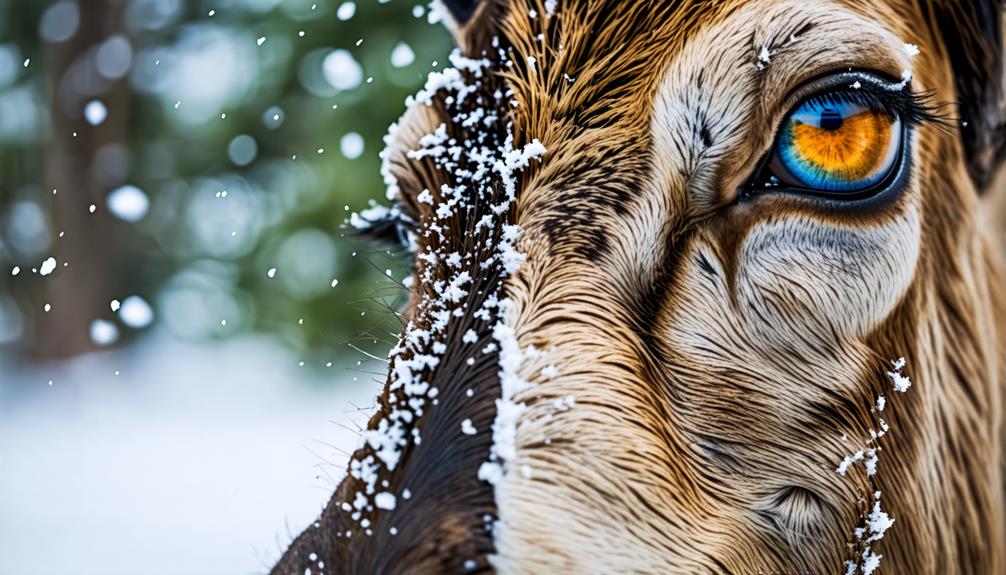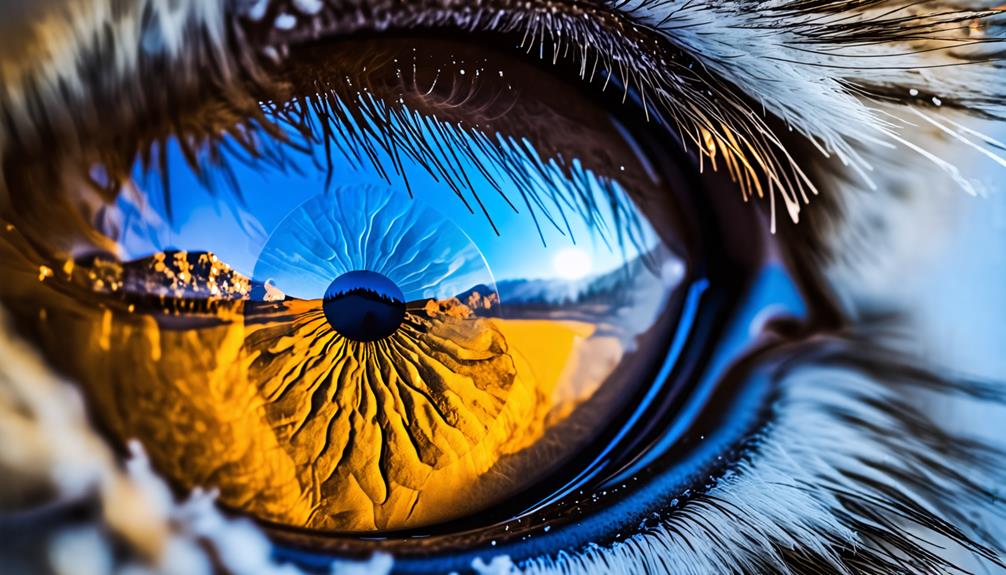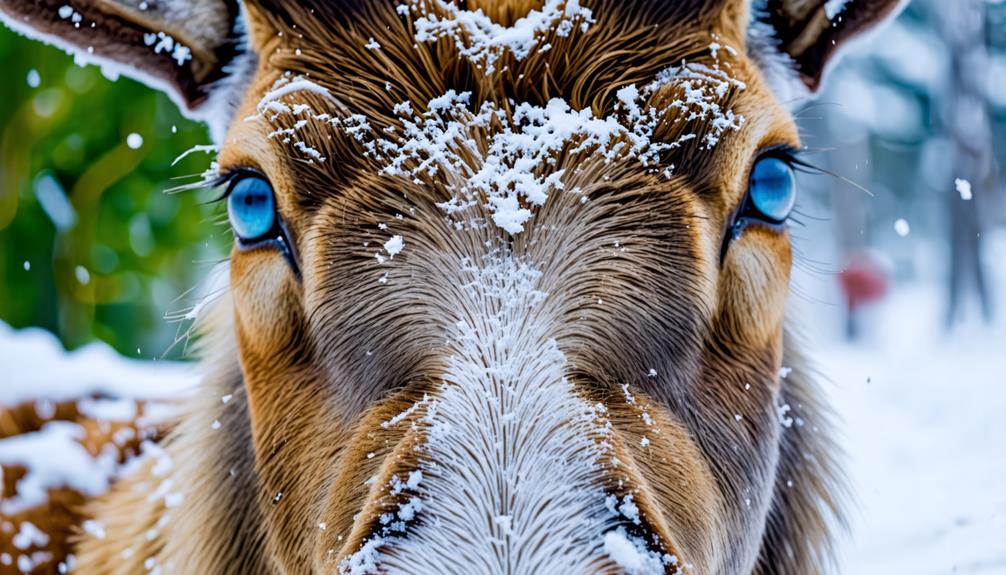You might think you know all about reindeer, but there's a fascinating aspect of these Arctic creatures that often goes unnoticed. Did you know that their eyes change color with the seasons? It's true—reindeer eyes shift from a golden hue in summer to a striking blue in winter. This isn't just a cosmetic change; it's a vital adaptation that helps them survive in the harsh Arctic environment. The reasons behind this transformation and its implications for reindeer survival are both intriguing and complex. There's more to this eye-catching phenomenon than meets the eye, and you'll want to discover the surprising details.
Key Takeaways
- Reindeer eyes transform from golden in summer to blue in winter due to changes in the tapetum lucidum.
- The color change enhances light sensitivity, making winter eyes 1,000 times more sensitive than summer eyes.
- Winter eyes allow up to 60% of UV light to enter, improving vision in low-light Arctic conditions.
- The adaptation helps reindeer locate lichen, their primary food source, against snow-covered landscapes.
Seasonal Eye Color Transformation

In a remarkable adaptation to their Arctic habitat, reindeer eyes undergo a striking seasonal transformation from golden in summer to blue in winter. This change occurs in the tapetum lucidum, a reflective layer behind the retina.
During summer, reindeer eyes appear golden as the tapetum lucidum reflects yellow light. As winter approaches, increased pressure in the eyes compresses collagen fibers, altering light reflection properties to capture shorter wavelengths, resulting in the blue hue.
These seasonal changes notably enhance the reindeer's vision in low light conditions. Winter eyes become at least a thousand times more sensitive to light than summer eyes, allowing up to 60% of UV light to enter.
This adaptation is essential for reindeer survival, enabling them to efficiently forage for food during the dark Arctic winters when energy is scarce.
Adaptation for Arctic Survival
Throughout millions of years of evolution, reindeer have developed a remarkable eye adaptation that's vital for their survival in the harsh Arctic environment.
These adaptive changes in reindeer vision allow them to thrive in the challenging winter darkness. Their eyes become a thousand times more sensitive to light, thanks to retinal reflections from the transformed tapetum lucidum.
This increased light sensitivity, coupled with the ability to see ultraviolet light, enables reindeer to spot their primary food source, lichen, against the snow-covered landscape.
These seasonal adaptations optimize foraging efficiency, allowing reindeer to conserve energy while locating food in the Arctic's unforgiving terrain.
Scientific Insights and Implications

Scientific research into reindeer eye color changes has revealed fascinating insights with far-reaching implications for our understanding of animal adaptations and potential technological applications.
You'll find that these seasonal changes in reindeer eyes go beyond mere aesthetics. The alterations in collagen fibril spacing within the tapetum lucidum greatly enhance light sensitivity, allowing reindeer to forage effectively in low-light conditions. Their ability to see ultraviolet light aids in locating lichen, their primary food source.
These adaptations have broader ecological implications:
- Inform conservation strategies for Arctic species
- Guide wildlife management practices
- Inspire biomimetic technologies for enhanced night vision
Conclusion
You've just learned about an incredible adaptation in nature. Reindeer's seasonal eye color change isn't just for show—it's a crucial survival mechanism.
As you consider this, remember that nature's ingenuity often surpasses our imagination. The next time you're in a snowy landscape, think of the reindeer's blue winter eyes, scanning for food in UV light.
It's a reminder of how animals continually evolve to thrive in challenging environments.

Leave a Reply